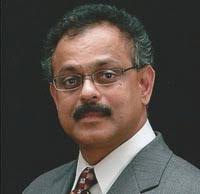Friday, April 13, 2018
Types of Lung Cancer Surgery
Board-certified in both General and Cardiothoracic surgery, Dr. Murali Macherla treats patients at Arizona Cardiovascular and Thoracic Surgeons in Phoenix. Dr. Murali Macherla offers particular expertise in Thoracic procedures and is experienced in the treatment of lung cancer.
Surgical treatment of lung cancer typically involves removal of the cancer as well as some to all of the surrounding lung. The most common procedure is the lobectomy, which requires the surgeon to remove the lobe that contains the tumor. In some cases, there may be a need for a sleeve lobectomy, in which the surgeon removes part of the primary bronchus that connects to the affected lung. A sleeve lobectomy may be an appropriate replacement for a pneumonectomy, which is removal of the entire lung. The latter procedure usually only occurs if a patient's cancer is located at the center of the lung or cannot be fully excised through lobectomy.
Patients who do not require removal of the entire lung or even an entire lobe may undergo a segmentectomy, in which the surgeon excises one to four segments of the three to five that make up an individual lung. Even less tissue is removed in a procedure known as wedge resection, which only requires the surgeon to excise a small portion of the tissue surrounding the tumor.
Tuesday, March 20, 2018
Dr.Murali Macherla,Thoracic and vascular surgeon
A Board-certified Thoracic and vascular surgeon, Dr. Murali Macherla serves on the staff at Arizona Cardiovascular and Thoracic Surgeons. Dr. Murali Macherla performs a variety of Thoracic and Vascular procedures, including video-assisted thoracoscopic surgery (VATS) and Robot Assisted Thoracic Surgery.
Video-assisted thoracoscopic surgery is a versatile procedure used to diagnose or treat a number of conditions rooted in the chest cavity.This can be done with Robot assistance as well. Performed with the patient under General Anesthesia, it allows the surgeon to visualize and access the lung,other Mediastinal structures and the inner lining of the chest wall. Unlike open-chest surgery, it requires only a few small incisions with less post-operative pain.
Through one of these incisions, the surgeon introduces carbon dioxide gas into the patient's chest. The surgeon will encourage collapse of the lung to be visualized and will then insert a tool known as a Thoracoscope, which features a small camera on the end of a tube.Images of the inside of the chest is seen by the Surgeon and the Assistant on a Video Monitor.More than one incision may be necessary if the surgeon needs to manipulate the area. This approach is used for multiple Thoracic procedures ranging from simple Biopsy to complex Lung resection, Because of its minimally invasive approach, VATS has also become popular in the treatment of Thoracic Malignancies.
A surgeon may also recommend VATS to remove fluid from around the lung, repair a hiatal hernia, or alleviate the symptoms of gastroesophageal reflux disease. Effective for other purposes as well, it offers the benefits of reduced post-operative pain and a shorter recovery time as compared to open-chest surgery.
Subscribe to:
Posts (Atom)

